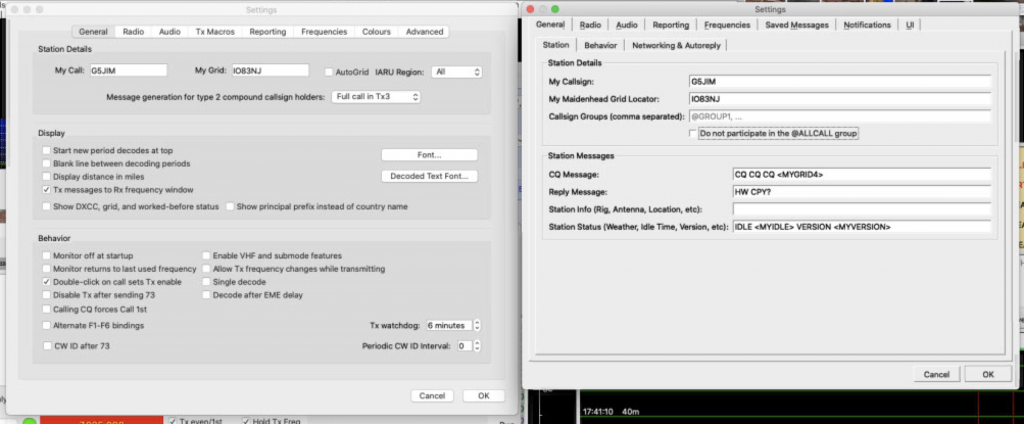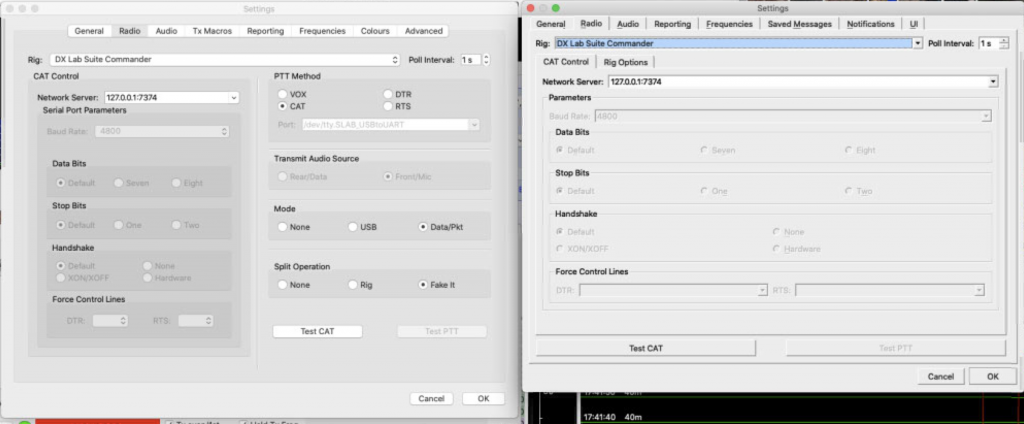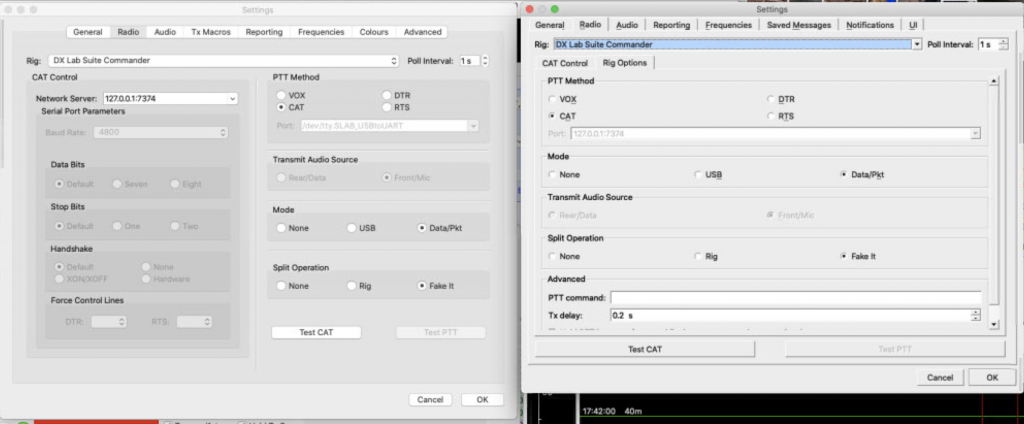This is a complete beginner post, but I was inspired to write it after seeing a question on Facebook by someone new to FT8, he had completed a QSO with someone, then got a message QSYQRM followed by AHOLE. He was questioning how you QSY (change frequency) on FT8 and if he’s done anything wrong, the operator in question had never altered the settings as he didn’t want to mess anything up.
The response here is clearly rude, totally unesscesary and possibly against license conditions depending on one feels about the phrase used (and the specific license conditions)…however the operator was it seems (unwittingly) causing QRM, so how?
Not wanting to mess things up the op didn’t adjust any settings, so he was just TXing on the frequency that happened to be in the Tx box or whatever frequency he might have set when clicking on the waterfall or selecting a call to respond to.
So how to avoid this?..first of all read the WSJT-X documentation, that should be obvious, but it really is a good document so make use of it, specifically take a look at the FT8 Basic Operating Tutorial…that being said there are a few steps it’s worth pointing out:
- Just Listen First – When you load up WSJT-X (or whatever software branched from WSJT-X you use) just RX for a couple of mins, watch the waterfall and…
- Select A Clear Frequency – Yes, you need to choose the frequency you’ll be TX-ing on, don’t just leave it where it is, you need to be actively involved to avoid causing QRM.
- Hold Tx Freq – This isn’t actually a must-do for using FT8, but the problem with hopping to the frequency of whoever you are responding to (when you double click on the decoded text) is that it might not be clear of activity for the opposite time slot, holding your Tx frequency ensures you are in control of where you are Tx-ing and avoids landing on top of someone…this is annoying when it happens to you, even though it is generally very innocent.
- Listen Again – This is really to avoid you being the victim of QRM, take a break from transmitting to check that your frequency is still clear, someone may have accidentally ended up on your frequency (you might be able to hear them, they might not be able to hear you). Regardless of whoever is at fault you’ll probably want to move to avoid interference in either direction.
This isn’t very in depth but hopefully it highlights the important basics to avoid causing QRM.



